Playing at Home
In which I look back at the last couple of months' standout dishes from Casa SaltShaker dinners, classes, and our new daytime takeout service.
It surprises me time and again that people who read these pages don’t know that we have an in-home restaurant. Casa SaltShaker has been a longtime destination in the restaurant scene here in Buenos Aires - two decades and counting. Prior to the pandemic we were generally open 3-4 nights a week, offering up a five course menu with paired wines at our communal table for ten. These days it’s generally just once a week, for a variety of reasons. In the last few months, however, I’ve been offering a daytime “takeout” service - using a WhatsApp broadcast to neighborhood customers with a plate or two of the day - generally 2-3 days a week (we’re not doing delivery other than in the immediate neighborhood, but dishes are available for pickup in person or via messenger). Mostly pastas, but a mix of other dishes in there too. As well, I’ve been picking up more students for private classes in Peruvian, Argentine, and Italian cooking.
So what’s been coming out of the kitchen?
Let’s start with Casa SaltShaker dishes. A cured trout in the offing - a sea trout fillet brushed with pisco (Peruvian brandy), then covered with a layer of dried muña, an Andean herb that’s quite aromatic, then a mix of coarse salt and sugar. Left to cure for roughly 24 hours.
Removed from the cure and rinsed.
And layered into a causa, a Peruvian appetizer. Here, sandwiched between layers of chilled mashed potato flavored with tangerine juice, sumac, olive oil, and salt (and a little roasted pepper puree for color), we have an asparagus, pecan, and gouda pesto with roasted garlic; a tartare (is it still a tartare if it’s cured?) of the cured sea trout with some chives; and cream cheese with chopped pickled chilies. The dressing on the plate is an emulsion of rice vinegar, pisco, muña, and oil. Garnished with a dusting of sumac, some asparagus tips, and chives. First course in the tasting menu, served with Huentala “Sombrero” Extra Brut, a Pinot noir based sparkling from Valle de Uco in Mendoza.
This one’s been awhile in the making. It started from a passage in a “gourmet” detective novel set in Tuscany that I read months back. I don’t recall which of the four volume Tuscan Mystery series from Camilla Trinchieri that it was, but in it, our protagonist twice uses the combination of tuna and artichokes - once to create a focaccia based sandwich and once in a pasta. Now, pre-artichoke season I’d played around with the sandwich - sliced focaccia browned on the griddle and topped with “tuna butter” (a purée of tuna, roasted garlic, capers, olive oil, and salt) topped with brined artichokes. It was delicious, and I loved the combination of the flavors.
Moving on to the pasta, I played around with similar sorts of flavors, and eventually moved on to agnolini filled with a “mousse” made from tuna, sour cream, capers, roasted garlic, parsley, anchovies, and lemon juice.
I served them topped with fresh artichokes “en escabeche”, a preparation I’ve written about in local press in the past. A little grated pecorino romano over the top and this was one of my favorite pastas of the last months, and a hit with our diners as well! We paired this with Lagarde Organic Rosé Semillón-Malbec 2024.
Fillets of local fish palometa, a type of leatherjack, simply sautéed in olive oil and butter. It’s served with a sauté of sopressata, fennel, palmitos, almonds, green & black olives, and limo chilies mixed with barley. The sauce is a light roux made with butter & walnut oil, anchovy, garlic, and flour that’s then used to thicken fish stock. We served it with Lagarde “Teia” Malbec-Petit Verdot 2024.
In the local takeout/delivery scene, as I said, it’s been mostly pastas. The big hits have been the pasta I recently wrote up with the sauce recreated from the movie Nonnas, which has been requested several times since we first made it; and our lasagna de ají de gallina, a Peruvian-Italian fusion dish that we’ve offered in various guises at Casa SaltShaker over the years.
Freshly made semolina pasta sheets, layered alternately with ají de gallina (shredded chicken in a cheese and yellow chili sauce), creamy mashed potatoes, and a chopped salsa of black olives, sun dried tomatoes, cilantro, and fresh mozzarella. Atop the final layer, thinly sliced small Andean potatoes dunked in olive oil, and a grating of parmigiano. We’ve tried out some versions of an ají de gallina lasagna before (here, here, here, here, and here), but this for me is the winner of them all.
Our ever popular version of fussili principe de napoli.
A little tart of these lovely mushrooms I found in Barrio Chino along with spinach and ricotta. Upfront, we were selling portions of the tart as an appetizer. For us, for dinner one night, I paired it with steaks.
Chicken meatballs - from an old Sephardic recipe that I love. Flavored with turmeric, cumin, pepper, and parsley and braised in a leek, onion, and bell pepper sauce. We’ve offered these a couple of times either with rice or pasta.
And, finally, classes…
A French style braised lemon chicken served with rice and a swiss chard gratin. I don’t often offer French cooking classes, just because I haven’t done a lot of French cooking since cooking school which was during the previous millennium. But a local Peruvian student wanted to learn some French techniques and specifically asked about braising and gratins. This worked.
And a couple of visitors to our fair city who wanted empanadas and fish, classic Argentine recipes. We have two types of empanadas here - baked ones with a take on the tuna and artichoke idea from above - just not pureed into a mousse or butter, and fried, lightly spicy mixed mushroom ones. Served alongside pejerrey a la colonial, an old-school local dish, stuffed globe zucchini (zapallitos rellenos), and roasted potatoes with bay leaf and a splash of vinegar.
And, baked empanadas filled with humita, a traditional mix of fresh corn, onion, green bell pepper, and cheese to accompany our long favorite version of lentejas, one of Argentina’s four “official” stews. Our recipe cooks the lentils in a tomato based broth with panceta, onions, garlic, celery, chilies, smoked pork stock, and balsamic vinegar. We separately brown some fresh chorizos and then add them to the mix, and finish it with a handful of arugula.
Needless to say, I’m keeping busy in the kitchen as well as in front of this computer!


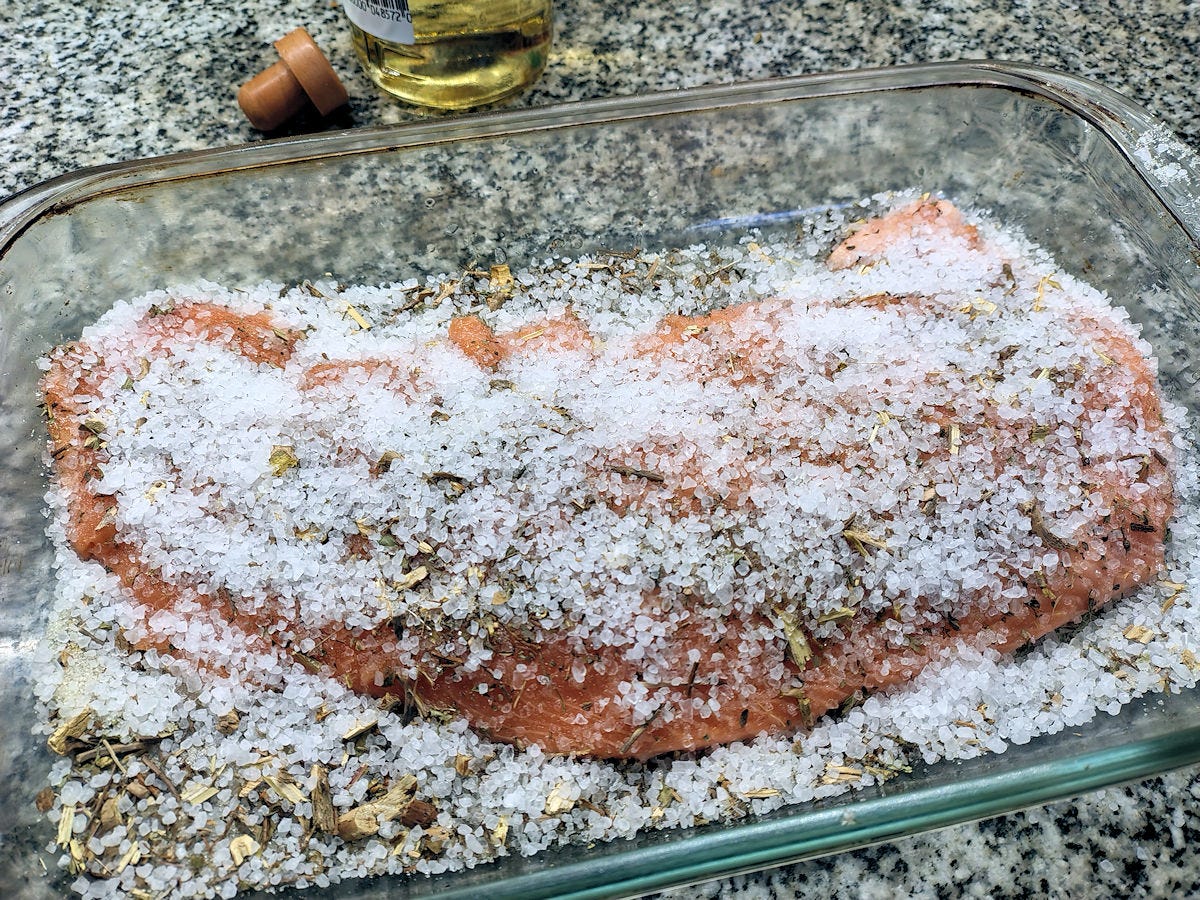

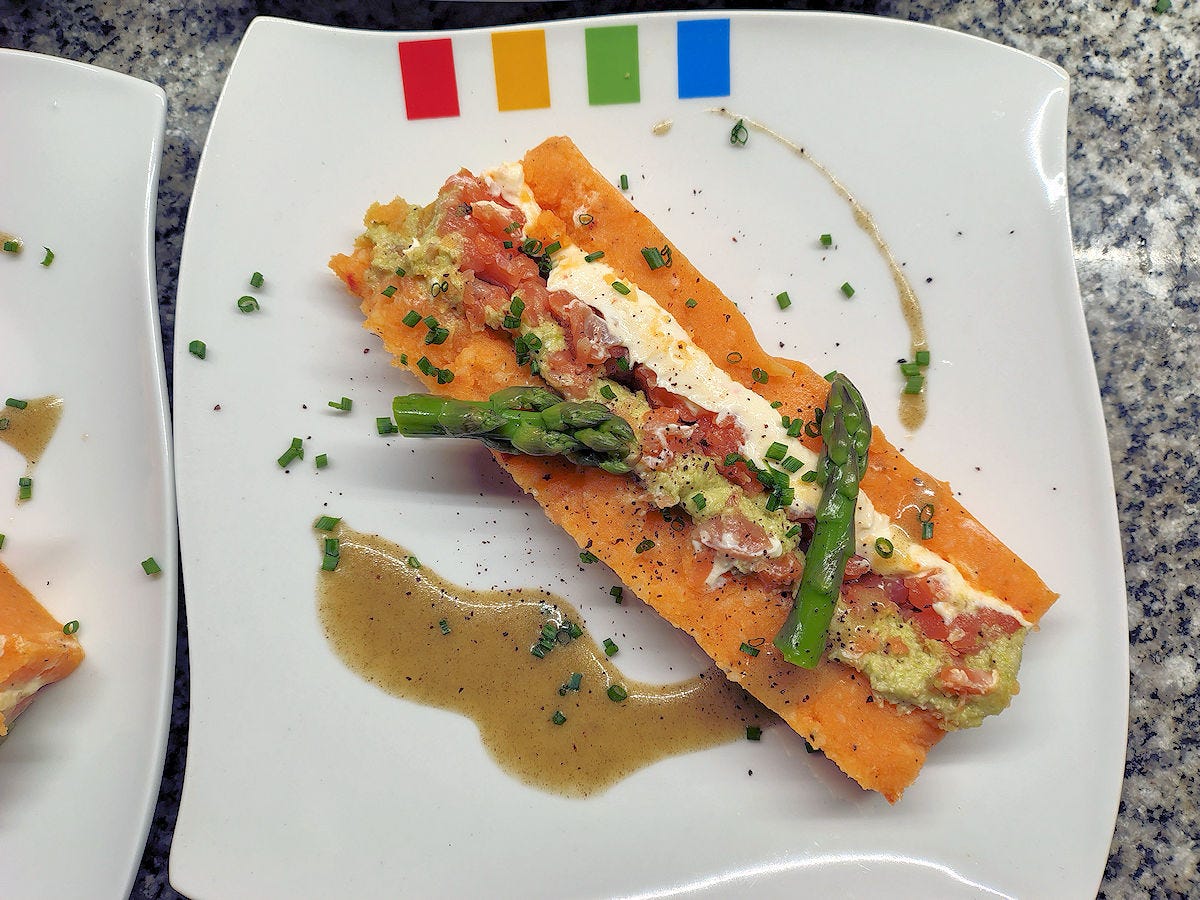
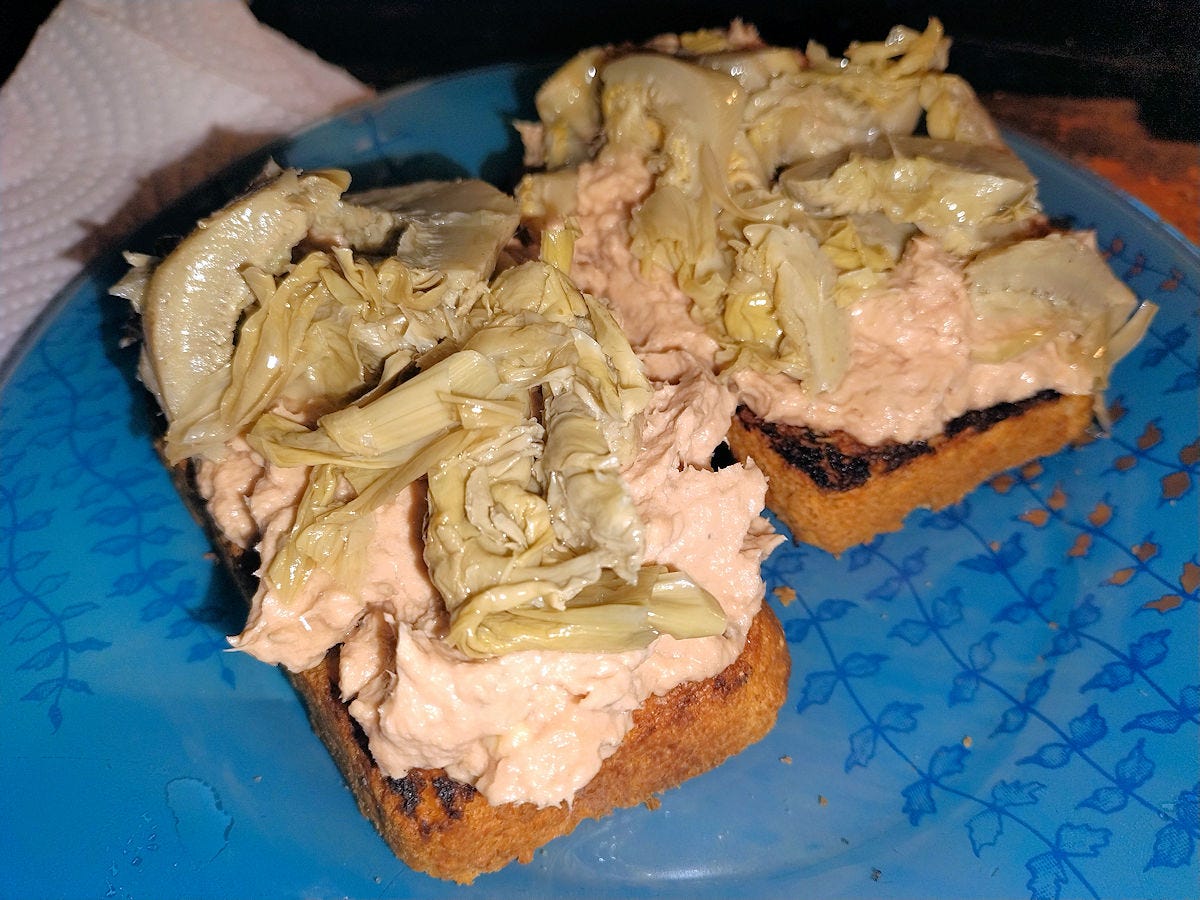
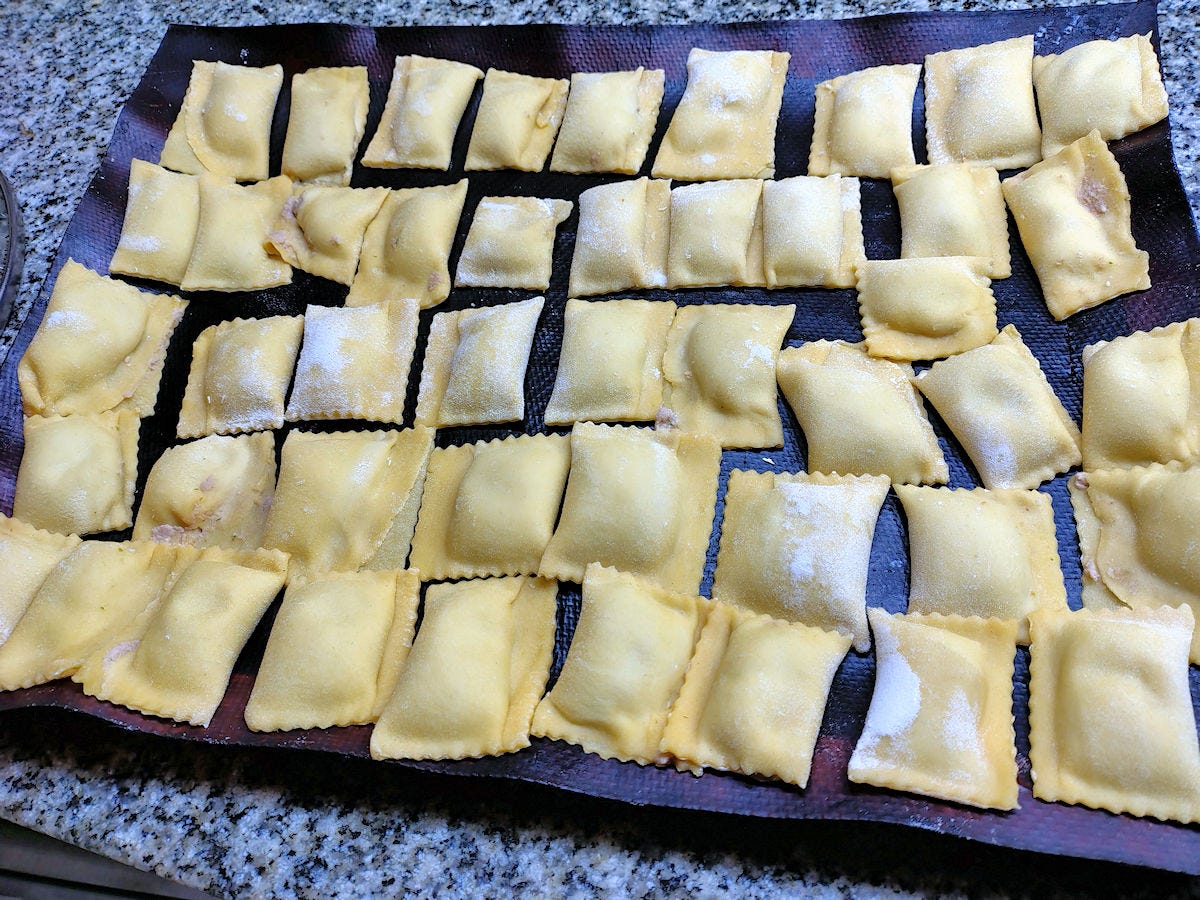
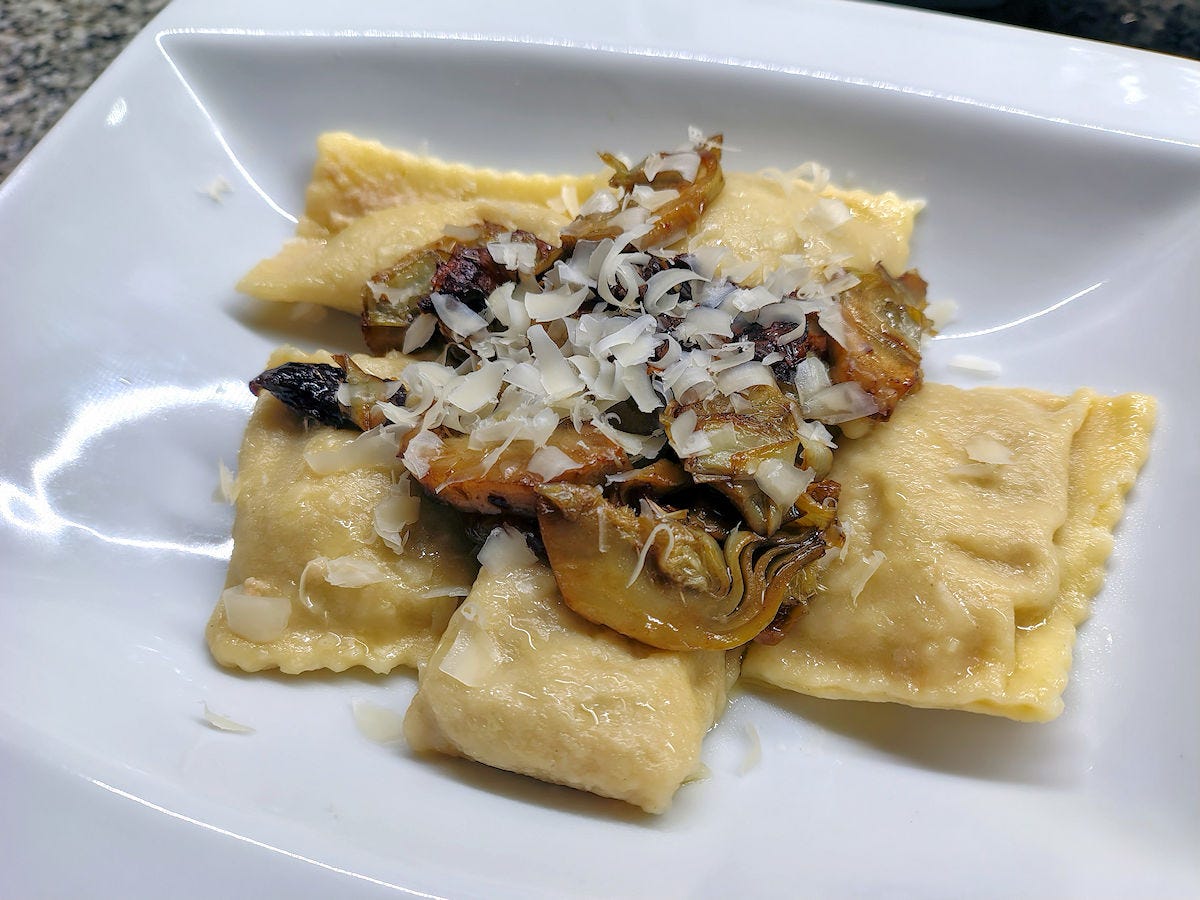
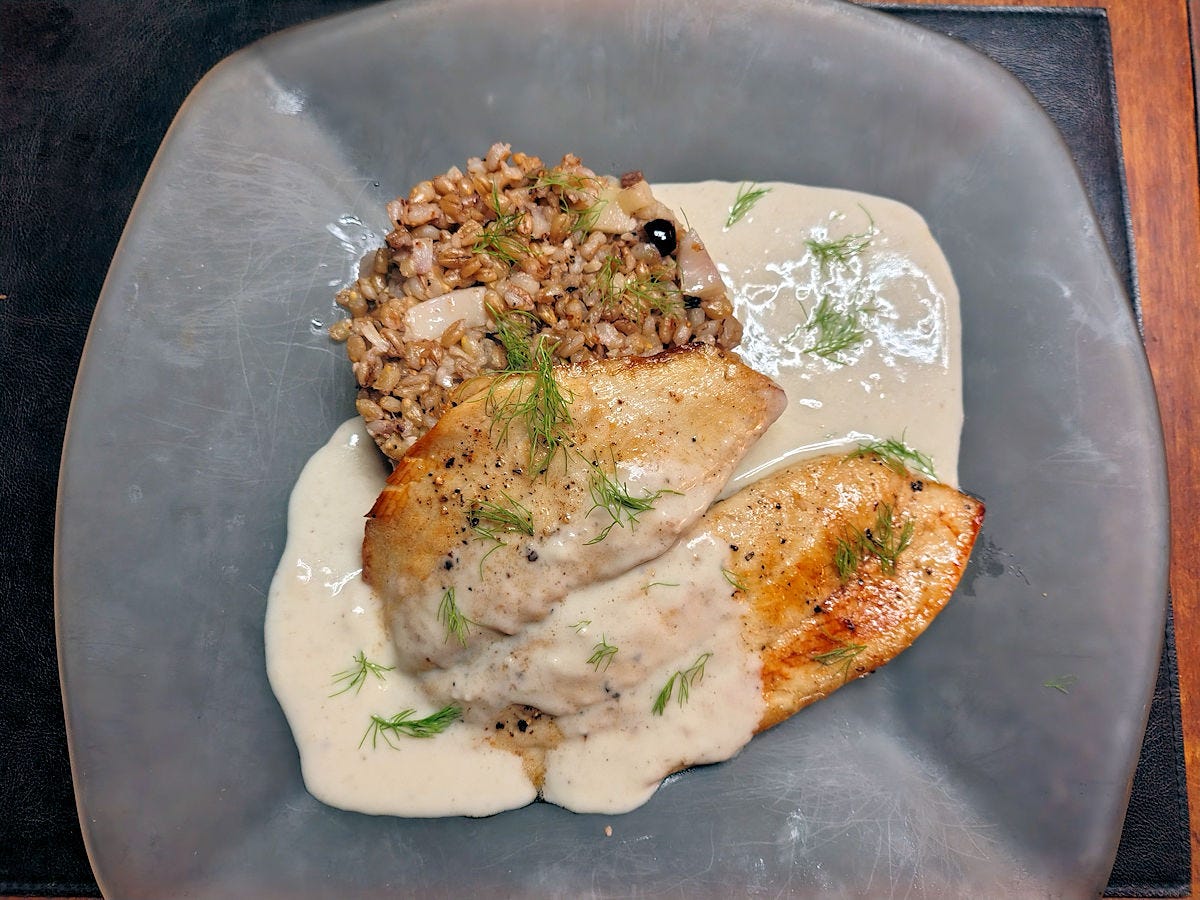



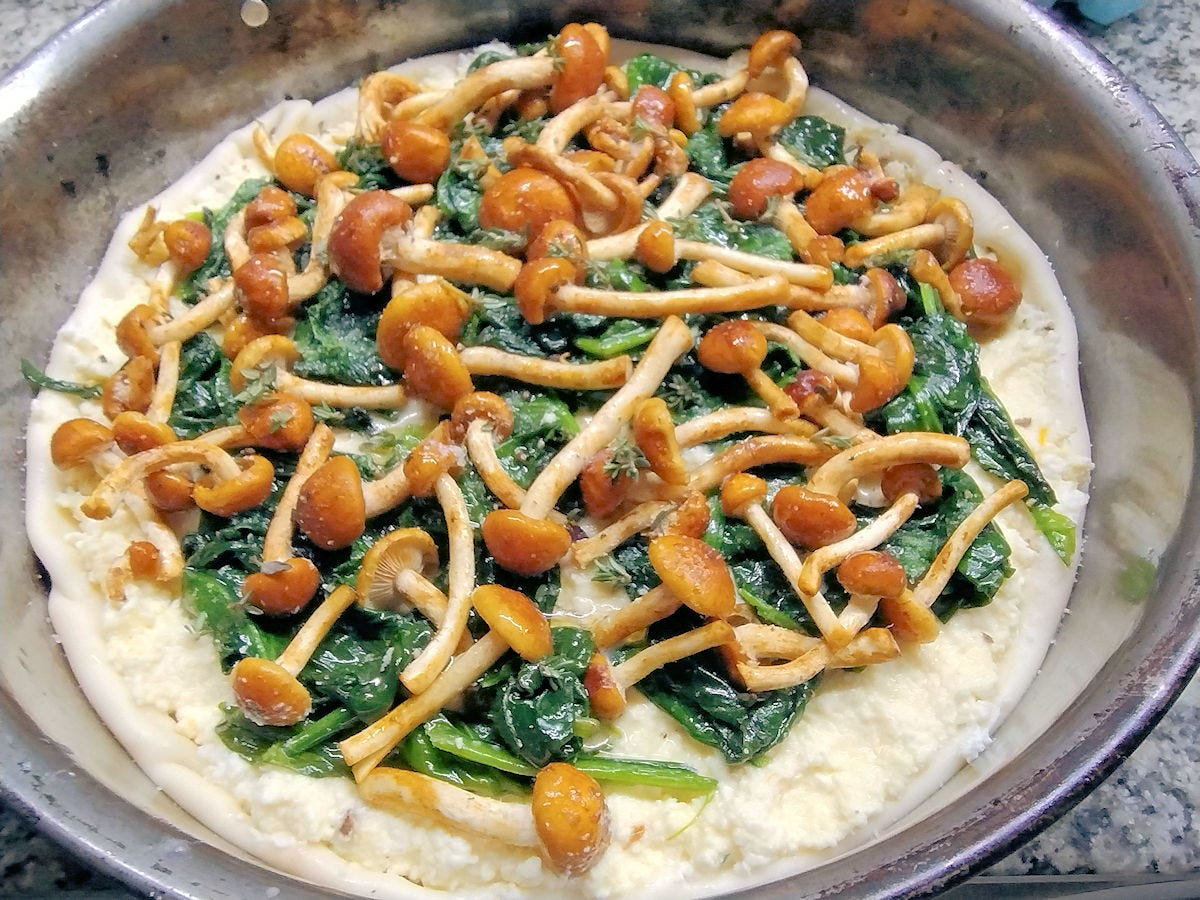
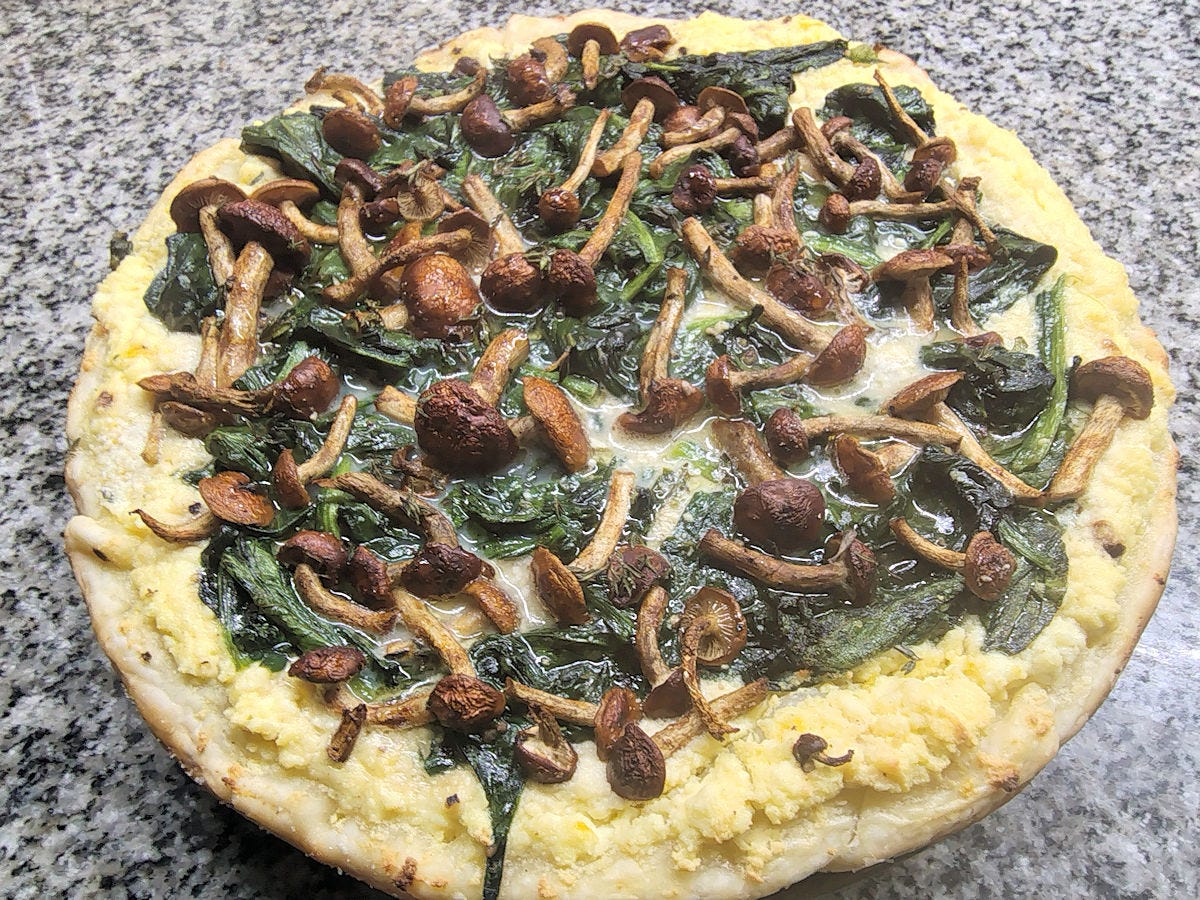
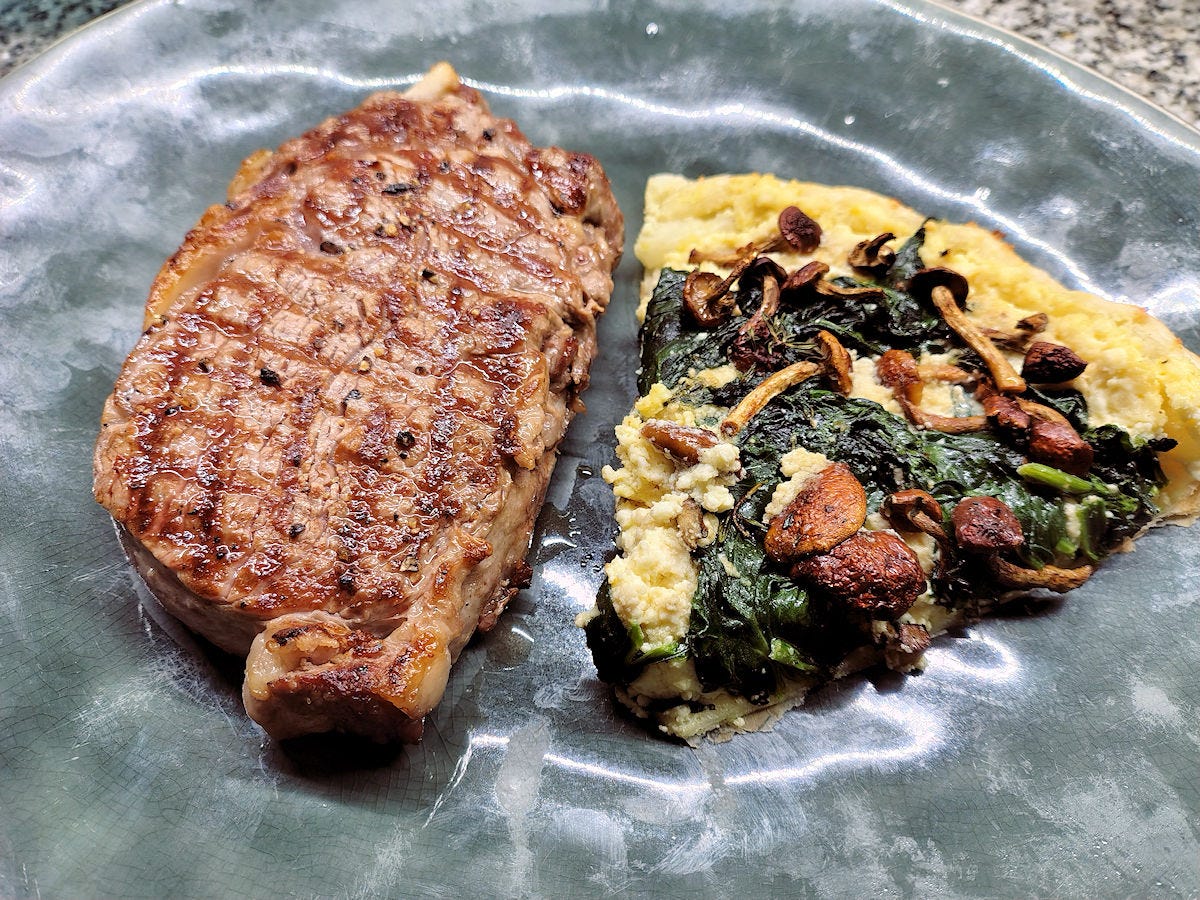
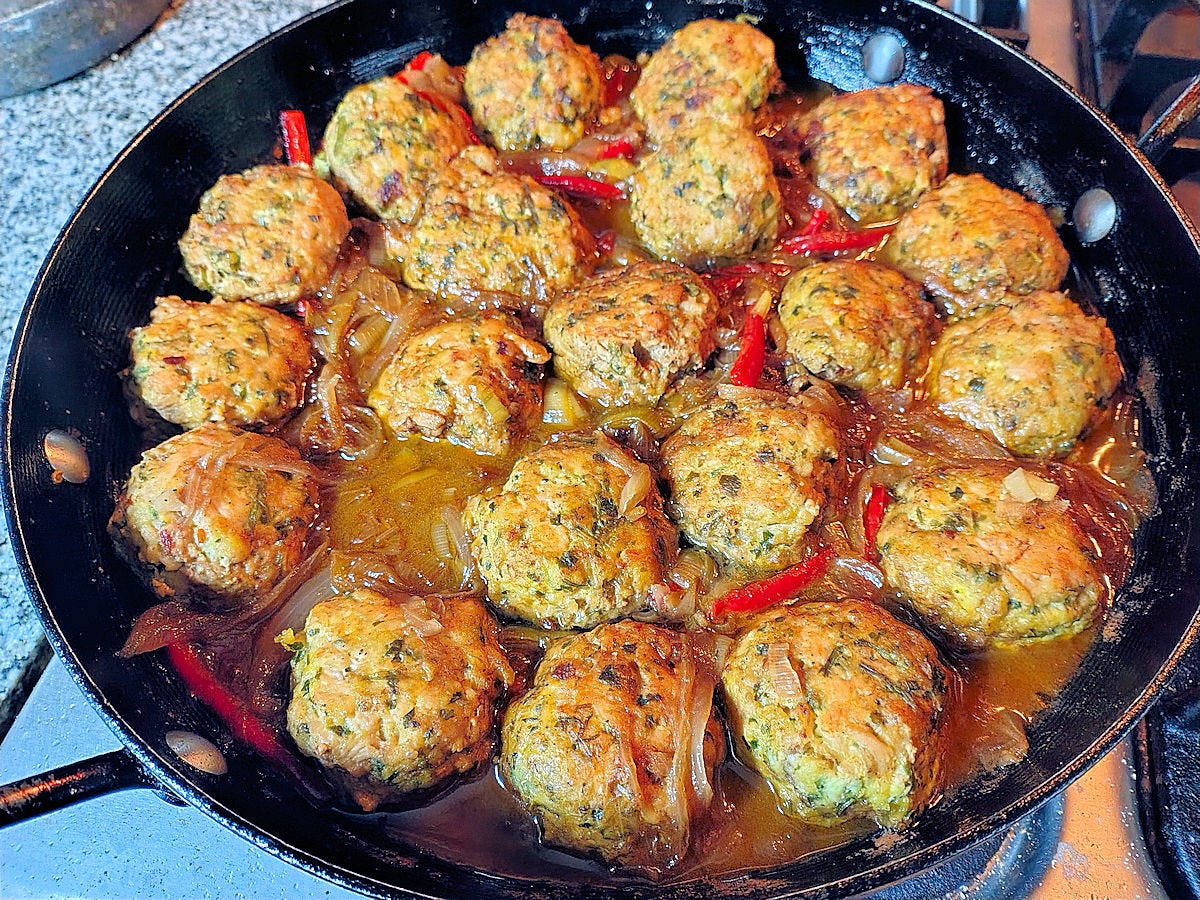

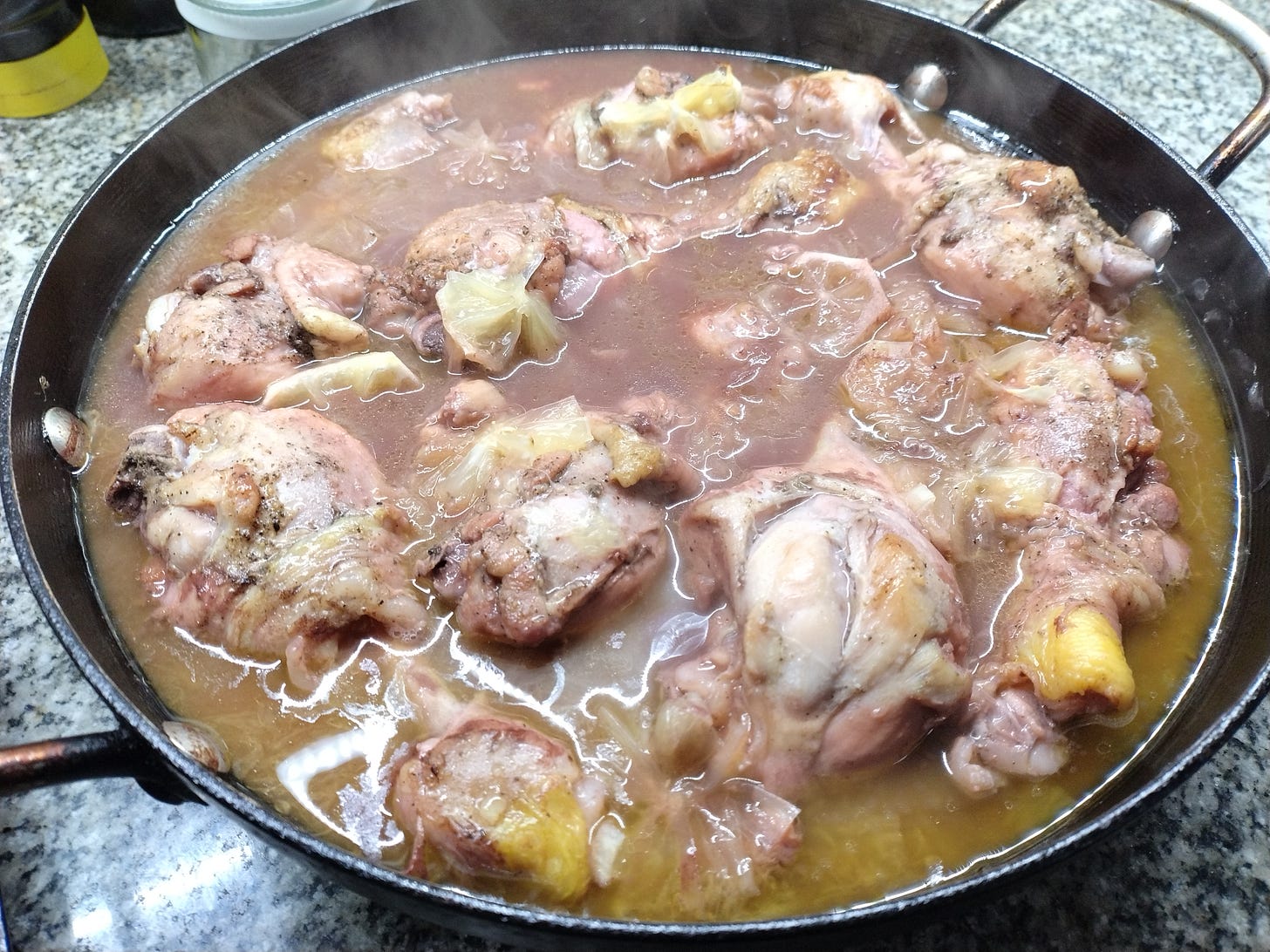
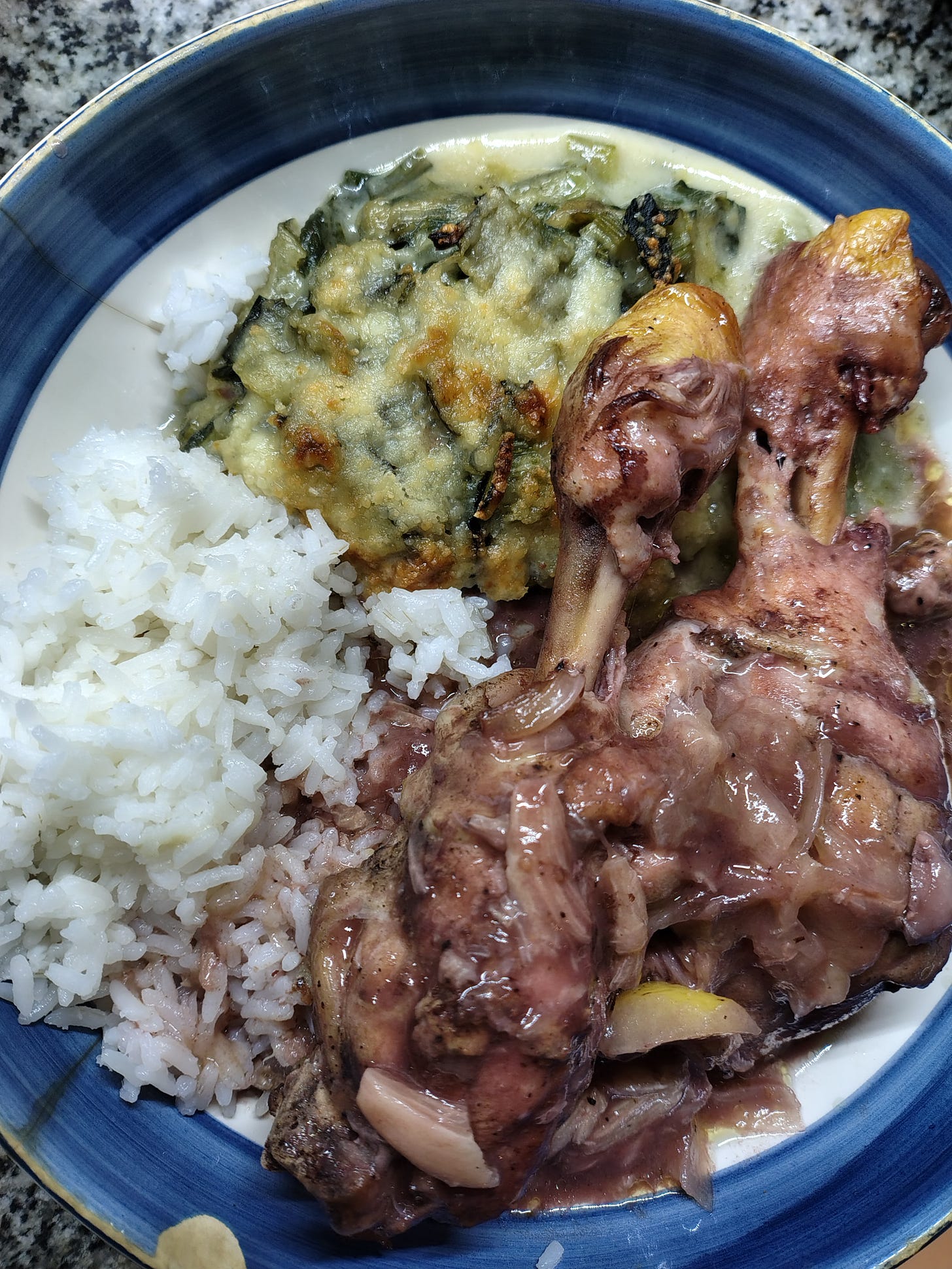
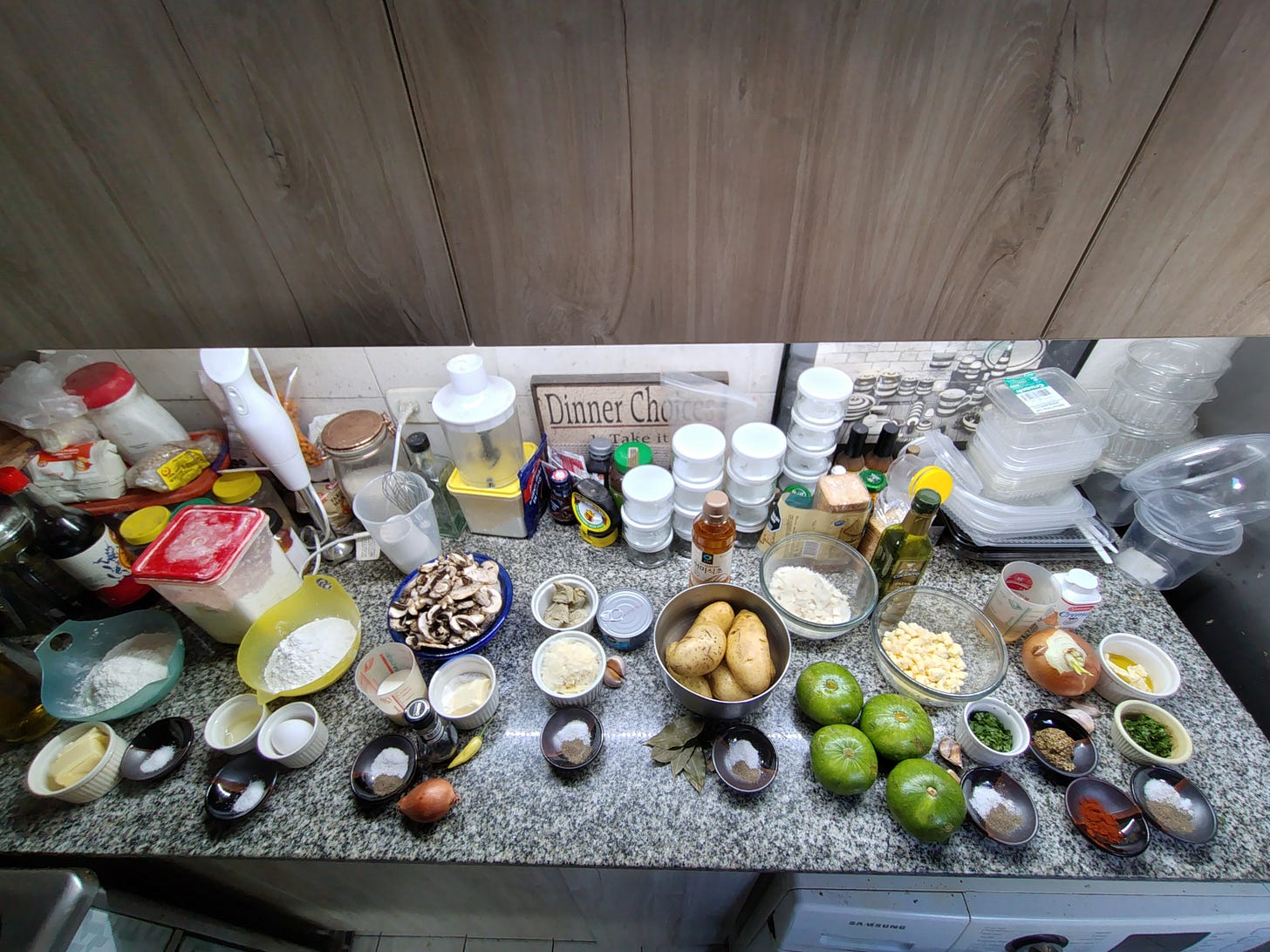
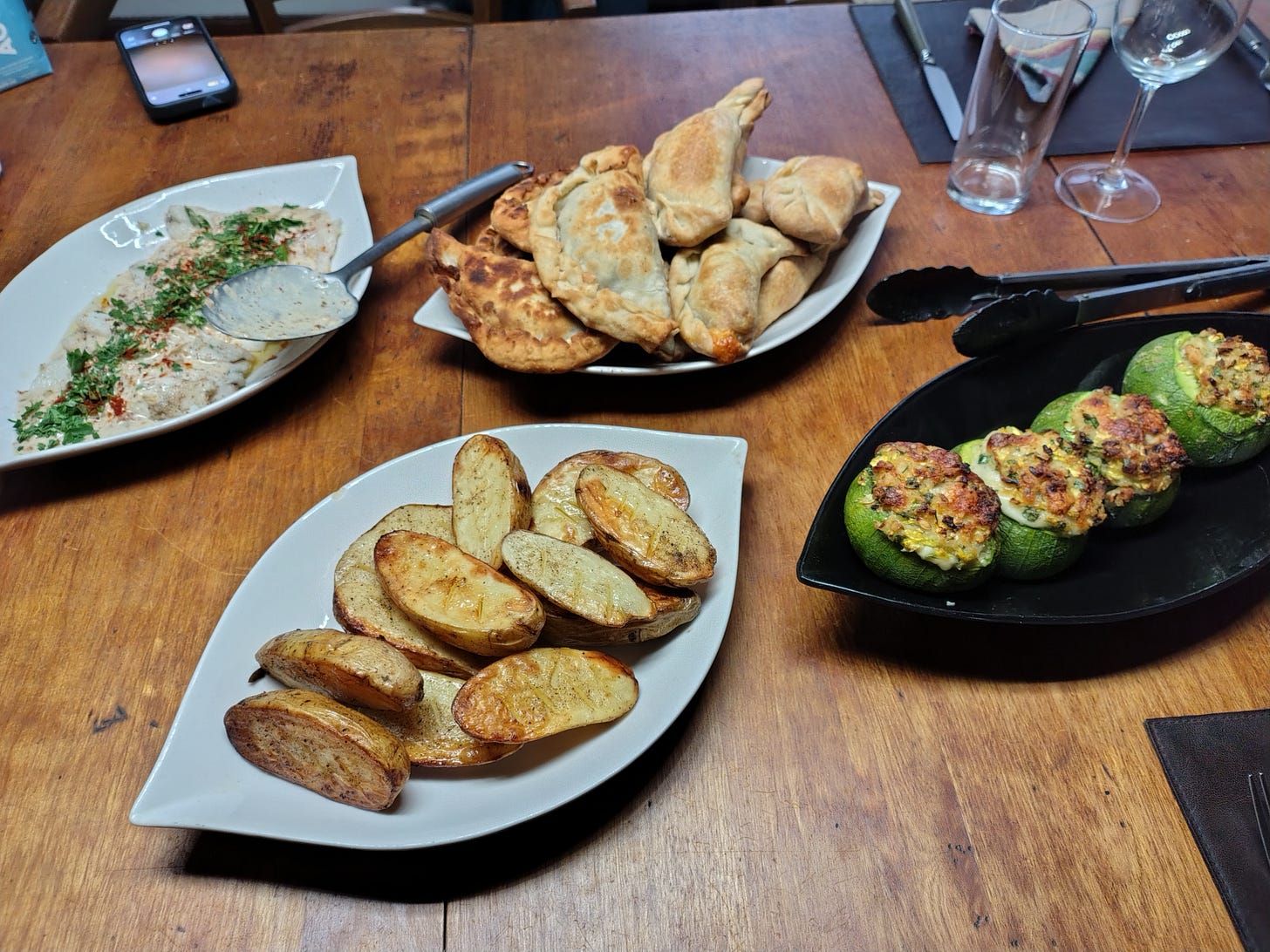

Restocked so I know where to find you; I have to do this one day! Bit of a trek from Parque Chacabuco, but when I spoil myself it will be worth it. 🙂